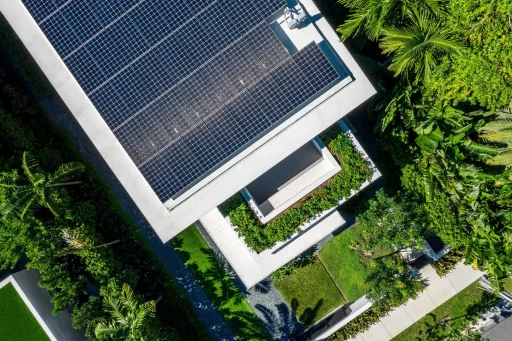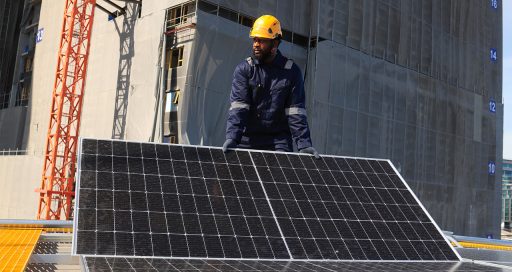Low-carbon performance contracts: a new tool for energy transition
Reading time: 5 min
France’s 2020 environmental legislation requires tertiary-sector real estate to take all its externalities into account. The low-carbon performance contract is part of this systemic evaluation approach, and an assessment method that VINCI Facilities is initially applying to itself.

An LCPC can make use of various tools: Carbon Contract Profile, Environmental QuickScan, Carbon Monitoring System, Greenhouse Gas Emissions Reporting.
France’s 2019 energy/climate law commits the country to reducing its greenhouse gas emissions (GHG) and achieve carbon neutrality by 2050. In the arsenal of provisions designed to help achieve this goal, some legislation is targeting specific business segments. For instance, The new so-called “RE2020” environmental regulations apply specifically to the construction sector.
Since 1 January 2022, new buildings must be designed to guarantee a target of reducing direct and indirect emissions by 40% by 2030 and 75% by 2050. Most affected among these new buildings are tertiary-sector premises, which are highly energy intensive.
“Starting with an assessment of our own facility management business across our entire operation.”
According to the Sustainable Real Estate Observatory, the carbon footprint of an office building amounts to 9 tonnes CO2 equivalent per square metre over its entire life cycle. The lighting, heating, climate control and water consumption required for buildings to function are naturally at the centre of the debate.
Four major criteria can be taken into account in this wider analysis of a building’s carbon footprint: responsible development, operational control, storage and circular economy (see box).
Low-carbon performance contracts go further than energy performance contracts

In this approach focused on comprehensive, systemic evaluation, owners, builders and operators have a new tool at their disposal: The low-carbon performance contract (LCPC), a contractual agreement between the project owner and operators specialising in energy services. Unlike an energy performance contract (EPC), the LCPC is not simply concerned with reducing energy consumption, but aims to reduce the carbon footprint of a given activity.
“Various tools can be used with a low-carbon performance contract”, says Emmanuel Nunes, Business Development Manager at VINCI Facilities. He continues, “The P2C (contract carbon profile) tool allows us to calculate the carbon footprint of the facility management contracts we fulfil for our customers, based on data and emissions factors from the ADEME and INIES databases. Environmental QuickScan is a quick method for measuring the emissions specific to our customers and prospects We then suggest a carbon reduction plan with commitments in line with their CO2 emissions reduction trajectories. CMS (Carbon Monitoring System) is a low-carbon performance contract tool for managing reduction commitments and highlighting the low-carbon performance actions implemented for the contract. The greenhouse gas emissions reporting tool BEGES is more specifically aimed at business units subject to regulation and wishing to pursue an ambitious carbon reduction plan”.
Label-based approach
Though not yet widely used, these new performance contracts should quickly become embedded in the real estate sector’s partnership practices. They will provide a further advantage in the process of obtaining various labels: Positive Energy & Reduced Carbon Building (E+C-), NF HQE™, BREEAM, LEED and BBCA).
To accelerate the adoption of low-carbon performance contracts and emphasise their undeniable legitimacy in the energy conservation efforts being made in the real estate market, VINCI Facilities decided to apply this approach to its own business activities. As Emmanuel Nunes explains, “Before acting and committing to reduce our customers’ emissions, for over a year now, our strategy has been to use this new unit of measurement – carbon – to evaluate our own facility management business, source by source, across our entire operation”.
The four criteria of extended carbon reporting
- The responsible construction criterion includes greenhouse gas emissions connected with every phase of building construction, right through to demolition: the production, transformation and transportation of construction materials; construction logistics; and materials used.
- The operational control criterion concerns the building’s operational phase and more specifically, its heating, cooling, domestic hot water production and ventilation, along with the use of renewable energies.
- The storage criterion covers the use of recycled and biosourced materials to insulate buildings.
- The circular economy criterion concerns the deconstruction, reuse and recycling of materials during the construction or alteration of the building.
15/02/2023





